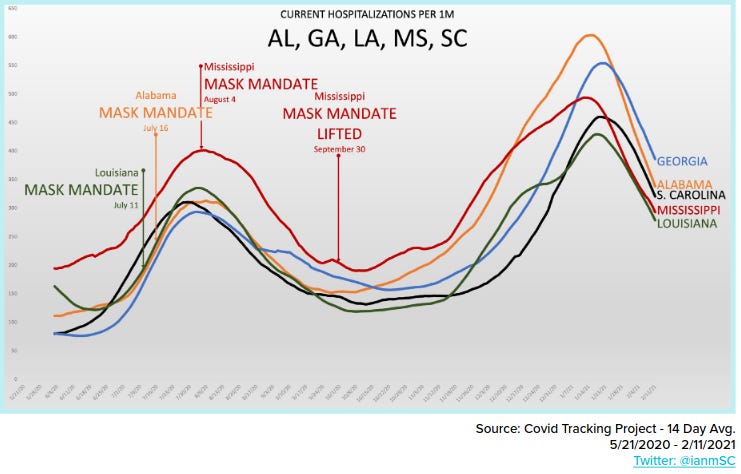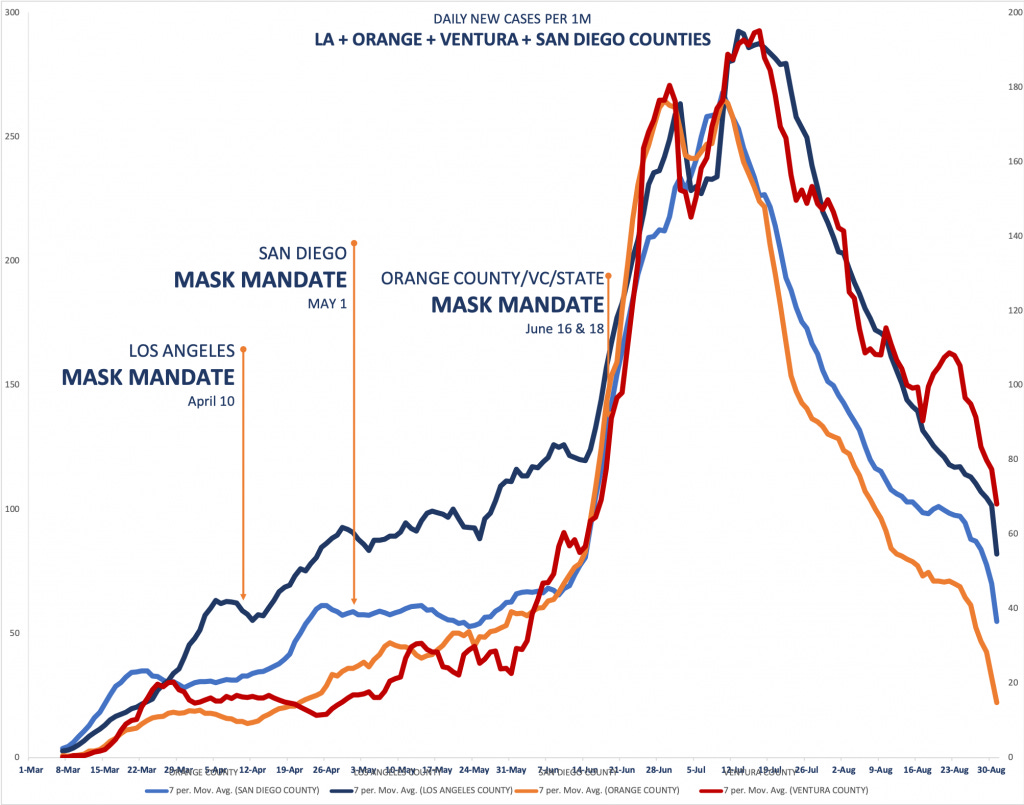How to spot bullsh*t arguments - Part 1
Logical fallacies are one of the major tools used by people trying to bullsh*t you. Learning how to spot them is a crucial skill of intellectual self-defence.
In last week's post, How to sharpen your bullsh*t detection skills, I covered the nine tools that the legendary American astronomer, cosmologist, astrophysicist, astrobiologist, author and science communicator, Carl Sagan, considered essential to any thinking person's 'baloney detection kit'.
When I published that post, it appeared that the official COVID narrative had collapsed under the weight of its own ridiculous self-contradictions. But wouldn't you know it, now fear-mongering is ramping up over a new scariant of SARS-CoV-2, "nicknamed by scientists on social media as Pirola" - maybe they should get off social media and do some real work. And consequently, your baloney detection muscles are going to be getting a good workout as the next wave of COVID propaganda thunders in.
In the same chapter of his 1995 book The Demon-Haunted World: Science as a candle in the dark, “The Fine Art of Baloney Detection", Sagan also summarised the 20 most common and perilous logical fallacies that we must be alert to whenever anyone is trying to persuade us of anything - whether it's a religious leader trying to persuade us to accept their theology, a salesperson trying to talk us into a purchase, or a public figure pitching us a policy.
Logical fallacies are errors or gaps in the reasoning process that invalidate an argument. Everyday conversation abounds with logical fallacies, because very few people have been formally trained in logic, and therefore they don't recognise the errors in their own reasoning processes.
Fortunately, the consequences of being taken in by a person who is innocently employing logical fallacies in their argumentation are rarely dire. For instance, if your friend convinces you that she has won her last three races because she was wearing a particular hat, and you decide to wear her 'lucky hat' when running your next race, not much can go wrong.
But it's a completely different story when people in positions of power are employing logical fallacies to persuade others to believe or do things that have a real impact on their lives.
In ancient Greece, a group of teachers who became known as Sophists taught the art of convincing rhetoric. The sophists intentionally deployed logical fallacies in their elaborate arguments, in order to persuade others of the point of view they were espousing. The Sophists were frequently hired by those who were in, or wished to be in, positions of power because they would happily take any side of an argument - for a fee.
In this post, I'll be covering the first ten of the twenty logical fallacies that Carl Sagan identified as the most common, with some illustrative examples from the COVID-19 debacle:
1. Ad hominem
Latin for 'to the man', an ad hominem argument attacks the arguer, instead of disputing the argument itself.
The use of the term 'conspiracy theorist' to dismiss anyone who raises concerns about any aspect of the global response to COVID-19 is an example of the ad hominem fallacy. Calling anyone who has questions about the safety and efficacy of the COVID vaccines (including, ludicrously, those injured by them) an 'antivaxxer' is another.
Ad hominem is used both to derail the person who is being attacked, by forcing them to defend themselves rather than pursue their argument; and to distract the audience's attention from the substance of the argument so that they don't ask the questions they really should be asking, in order to understand the substance of the argument.
2. Argument from authority (argumentum ab auctoritate)
The admonition to 'trust the experts' is a prime example of this rampant logical fallacy. Australians might remember former Prime Minister Scott Morrison's airy dismissal of valid concerns about the safety and efficacy of COVID-19 injections with this classic of the genre: "The best medical professionals in the world have signed off on these vaccines so you can be confident." Wow, that didn't age well.
Every person occupying a position of power or authority should be expected to demonstrate their competence and worthiness to occupy that position by presenting cogent, evidence-based arguments for their decisions and policies.
To allow yourself to be persuaded by anyone who presents themselves, or is presented by others, as an 'authority' without insisting that they demonstrate their expertise - preferably in a forum in which it can be challenged by others with expertise on the subject - is to be taken in by the logical fallacy of argument from authority.
3. Argument from adverse consequences (argumentum ad consequentiam)
This type of logical fallacy is based on another logical fallacy - an appeal to emotion - and is essentially an argument that a belief is either true or false based on whether the belief leads to desirable or undesirable consequences.
An example of the argument from adverse consequences is the insistence by many public health 'authorities' that infection with SARS-CoV-2 presents a grave danger to all people, including children, athletes and healthy adults. Accepting the alternative argument - that susceptibility to developing COVID-19 is largely attributable to age and health status - might lead to discrimination against elderly people and those who are metabolically unhealthy (obese, diabetic, or suffering from cardiovascular disease).
However, facts are facts. It is never acceptable to obfuscate facts because they might cause people to doubt the dominant narrative or hold views that you wish they wouldn't.
4. Appeal to ignorance (argumentum ad ignorantiam)
This fallacy is based on the assumption that a statement must be true if it cannot be proven false, or false if it cannot be proven true.
This logical fallacy is frequently employed to dismiss health concerns that arise after a person has received a drug or injection.
When a medical treatment, such as COVID-19 injections that employ never-before-utilised technologies, is administered to millions of people of widely varying ages, health statuses and ethnicities, adverse effects that did not appear in the clinical trials (which were conducted primarily on relatively young, healthy people of majority race) are virtually guaranteed to occur
.Dismissing these adverse events as 'coincidences' because they did not appear in the clinical trials, is an example of the appeal to ignorance. Absence of evidence of a causal relationship between the adverse event and the treatment is not evidence of absence of this relationship.
It's not the responsibility of the person who suffered the adverse health consequence to prove that it was due to the treatment, because this person - not having access to the data available, or potentially available, to the purveyor of the treatment - is in no position to furnish proof.
5. Special pleading
This logical fallacy involves ignoring certain elements of an argument that are unhelpful for the claims being made, or asking that the claim be treated as an exception to a general rule, without explaining why it should be treated as one.
The Australian government, along with those of most countries in the world, used the special pleading fallacy to justify both its unconstitutional abuses of civil liberties, and its failure to abide by its own pandemic preparedness plan, throughout the COVID-19 'crisis'.
The public has still not been given any rational explanation as to why governments have not followed their own pandemic preparedness plans. Instead we are asked to blindly accept that the threat posed by COVID-19 was so dire that it required this deviation - despite the fact that pandemic preparedness plans include consideration for the most dangerous pandemics imaginable, which COVID-19 clearly is not; in fact, it's of 'low clinical severity' according to the definitions laid out in the plan:
6. Begging the question/assuming the answer (petitio principii)
Also known as circular reasoning, this logical fallacy occurs when an argument's premises assume the truth of the conclusion, instead of supporting it. In other words, the claim being made is assumed to be true, without proof.
The argument that a government protected its citizens by locking down because lockdowns save lives, is an example of this logical fallacy. The assumption that lockdowns save lives is presented as true, without any supporting evidence.
In fact, there is not a single shred of evidence that stay-at-home orders, 5 kilometre travel zones, school and retail business closures, work-from-home policies, social distancing, border closures, curfews or any of the other elements of the biosecurity theatre to which we were subjected, saved a single, solitary life. On the contrary, the massive economic, social and educational disruption cost lives, and will continue to do so well into the future.
7. Observational selection/enumeration of favourable circumstances
Colloquially known as 'counting the hits while ignoring the misses', examples of this logical fallacy have abounded throughout the COVID-19 manufactured crisis.
One of my favourites is the argument that face masks work to reduce the transmission of SARS-CoV-2, because in a selected set of communities, within a certain time frame, the growth rate of 'COVID-19 cases' was reduced by up to 2 per cent in communities that instituted mask mandates (yes, I kid you not - the maximum effect size observed was a 2 per cent lower increase in the growth rate of new 'cases').
As I pointed out in last week's post, when a wider dataset and longer timeframe are considered, it is clear that mask mandates have made not one whit of difference to the number of cases, deaths or hospitalisations attributed to COVID-19:



8. Statistics of small numbers
When someone argues that COVID-19 must be a deadly pandemic because six out of the ten people they know who had it became seriously ill or died, they're falling prey to the logical fallacy of the statistics of small numbers.
The true severity of an infectious disease can only be determined once one has identified the total number of people who have become infected, and then calculated the proportions who developed severe symptoms, were hospitalised, and died.
The antidote to this logical fallacy is to gather and analyse data on large numbers of subjects. Seroprevalence studies show that the vast majority of people infected with SARS-CoV-2 experience either minor symptoms or no symptoms at all, and the percentage who die as a consequence of the infection is in the same range as influenza.
9. Misunderstanding of the nature of statistics
The vast majority of people who hold public positions of power - not to mention the overwhelming bulk of the general population - are functionally innumerate. Their inability to grasp the nature of statistics has been used as a blunt force weapon against the public since SARS-CoV-2 first appeared.
For most people, high school maths classes were so long ago (and so badly taught) that they have long since forgotten the meaning of basic statistical terms such as median, mean and rate, let alone standard deviation and statistical significance. This poor grasp of fundamental mathematical concepts left them wide open to being bludgeoned over the head by a never-ending stream of context-free statistics on cases, hospital occupancy and death.
10. Inconsistency
It's hard to pick a winner for the title of 'most egregious inconsistency' served up to the public over the last three years, but my vote would go to this one:
Anyone who died after testing positive to SARS-CoV-2 (or who didn't test positive, but was assumed to have been exposed) died because of the virus, even if they had no symptoms consistent with COVID-19, were known to be suffering from other serious medical conditions, or were extremely old and approaching the end of (or past) their expected lifespan. However, anyone who dies within weeks, days or even hours of receiving a COVID-19 injection died of old age, pre-existing illness, or unknown causes that were definitely not related to receiving the injection. Because Science™.
Your homework assignment
Practise spotting the use of logical fallacies in your daily interactions with others - both online and in real life - and by politicians, bureaucrats and self-appointed experts. Some logical fallacies are easy to spot, but in many cases their use is subtle, and you'll need to pay close attention to the arguments being made in order to identify them.
Often a single argument contains multiple logical fallacies. You don't need to identify them all; the use of even one should alert you to the possibility that an attempt is being made to manipulate you, and you should be on your guard.
Share your examples of logical fallacies in the comments section below!
In Part 2, we'll cover the remaining 10 key logical fallacies highlighted by Carl Sagan. Until then, happy bullsh*t detecting!
Furthermore, as we have since learned, vaccine manufacturers hid serious adverse effects by dropping injured people from the clinical trials, labelling their injuries as non-serious or 'all in their heads', or simply adjudicating that their injuries were not caused by the experimental injections.




No comments:
Post a Comment